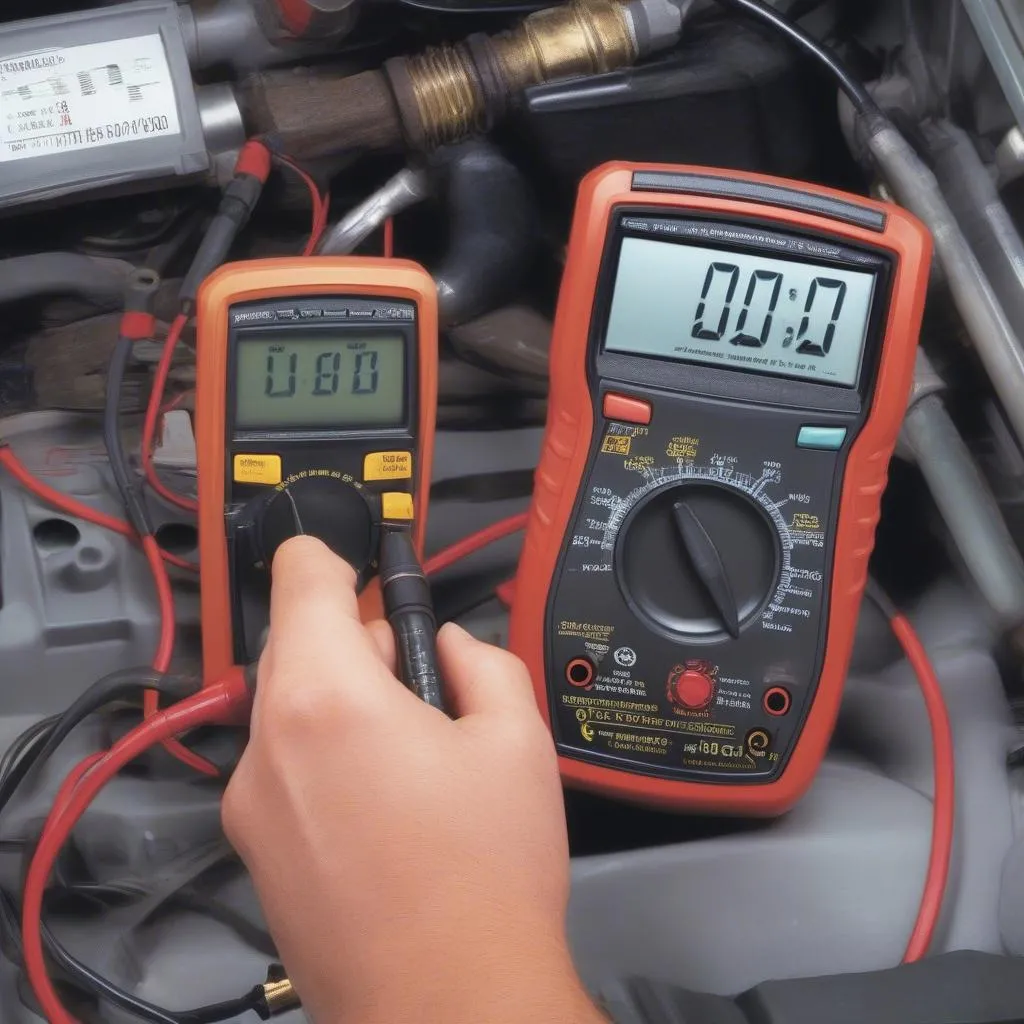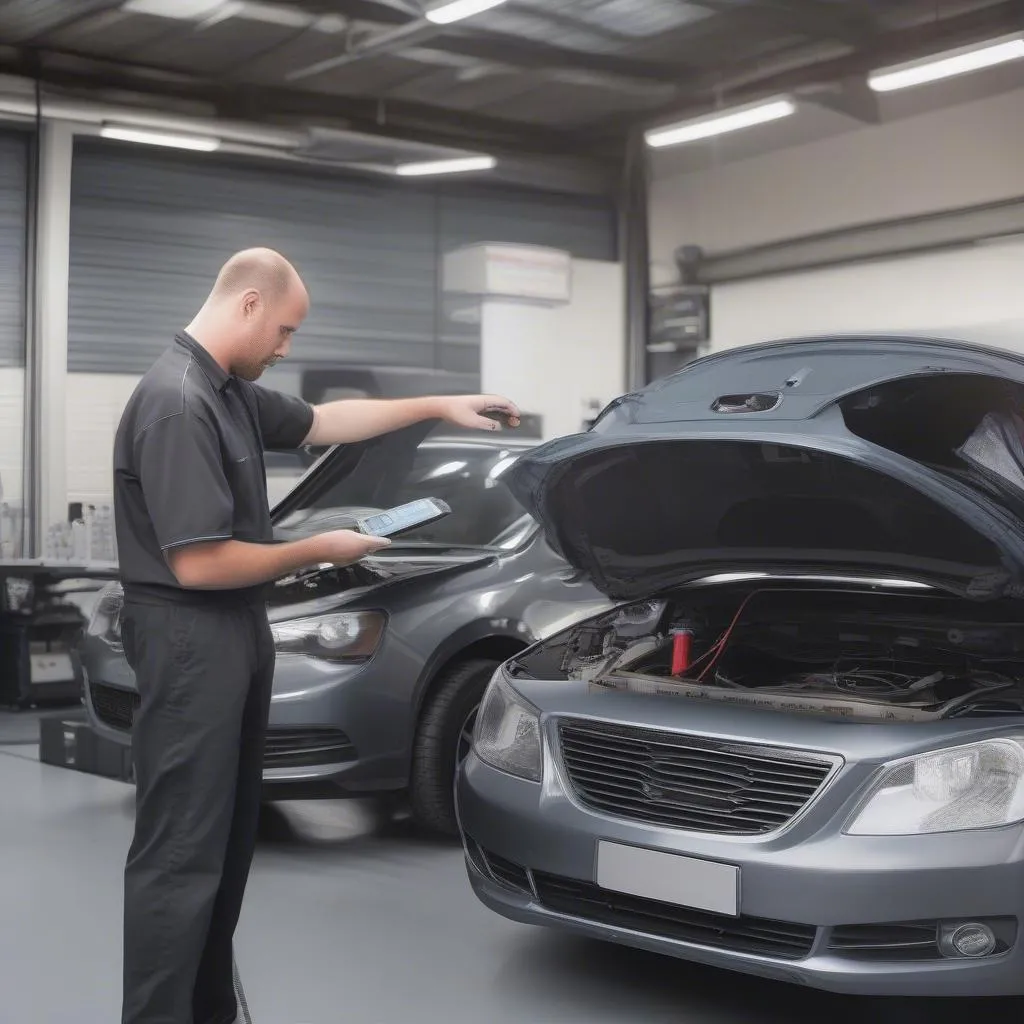Imagine this: you’re driving down the road, and your car suddenly starts sputtering. You pull over, pop the hood, and start to diagnose the issue. But you quickly realize that you’re missing a crucial piece of equipment – a diagnostic scanner. You need to plug it into your car’s OBD port, but you’re not sure if it’s even working!
So, Does An Obd Port Need Power To Inspect A Car? The short answer is yes! But let’s dive deeper into why that is, and what you need to know about OBD ports and your car’s electrical system.
What Does The OBD Port Do?
The OBD (On-Board Diagnostics) port is a standardized connector located in your car’s cabin, usually beneath the dashboard or near the steering wheel. It’s designed to provide a gateway for diagnostic scanners to access your car’s computer system.
Importance of OBD Ports in Automotive Diagnostics
Think of the OBD port as a “black box” of your car’s electrical system. It allows technicians and even DIYers to access and read valuable data that can help diagnose problems and make necessary repairs.
Data Accessible Through The OBD Port
The OBD port can provide information about a wide range of components, including:
* **Engine Performance:** Engine RPM, fuel injection, ignition timing, misfires, oxygen sensor readings, and more.
* **Transmission:** Gear selection, torque converter lock-up, and transmission fluid temperature.
* **Emissions:** Oxygen sensor readings, catalytic converter efficiency, and evaporative emissions system performance.
* **Safety Systems:** Airbag deployment status, seatbelt sensors, and tire pressure monitoring.
* **Other Systems:** ABS, traction control, and other advanced driver-assistance systems.
How Does An OBD Port Receive Power?
The OBD port is connected to your car’s electrical system, drawing power from the battery. This power is essential for the port to function correctly and for the diagnostic scanner to communicate with your car’s computer.
The Power Source: Battery and Electrical System
Think of your car’s battery as the heart of the electrical system. It provides power to all components, including the OBD port. The electrical system acts as a network of wires that distributes power throughout the vehicle.
The OBD Port’s Power Consumption
The OBD port itself doesn’t consume much power. It’s designed to operate efficiently, so the power draw is minimal. The primary power consumption occurs when a diagnostic scanner is connected, as the scanner uses the power from the OBD port to operate and communicate with your car’s computer.
What Happens If The OBD Port Doesn’t Have Power?
If the OBD port isn’t receiving power, your diagnostic scanner won’t be able to communicate with your car’s computer. This will prevent you from accessing any diagnostic data and making repairs.
Common Causes of A Non-Powered OBD Port
* **Dead Battery:** A completely dead battery will cut off power to all electrical components, including the OBD port.
* **Loose Connection:** A loose connection between the OBD port and the wiring harness can interrupt the flow of power.
* **Fuses:** There may be a blown fuse in the fuse box that controls the OBD port.
* **Damaged Wiring:** Damage to the wiring harness leading to the OBD port can also prevent power from reaching it.
How To Check If Your OBD Port Has Power?
You can check if your OBD port has power using a multimeter. Simply connect the multimeter’s probes to the OBD port’s power terminals. You should see a voltage reading between 10-15 volts.
What To Do If The OBD Port Doesn’t Have Power
If your OBD port doesn’t have power, the first thing you should do is check your car’s battery. If the battery is dead, jump-start it and check the OBD port again.
If the battery is fine, you’ll need to check the fuses, wiring, and connections to identify and fix the problem. You may need to consult a mechanic or automotive electrician for assistance.
 Checking the OBD port for power
Checking the OBD port for power
Frequently Asked Questions
What are the risks of using a non-powered OBD port?
Using a non-powered OBD port can be risky, as it can damage your diagnostic scanner. The scanner may try to draw power from the port, but since there is no power available, it can overload and cause damage.
Can I use a power adapter for the OBD port?
It’s not recommended to use a power adapter for the OBD port. The OBD port is designed to draw power directly from the car’s battery, and using a power adapter could interfere with the electrical system and cause problems.
How often should I check my OBD port for power?
It’s a good idea to check your OBD port for power every few months, especially if you haven’t used it recently. This can help ensure that the port is functioning correctly and that your diagnostic scanner will be able to communicate with your car’s computer.
Finding The Right OBD Scanner For Your European Car
You’re probably thinking, “If my OBD port needs power to inspect my car, how can I be sure my scanner is working correctly?”. That’s where choosing the right scanner for your European car is crucial.
European cars are notoriously known for their complex electrical systems. Many require special diagnostic tools designed specifically for their brands. This is where a Dealer Scanner for European cars comes in.
Dealer Scanner for European Cars: What Are They?
These scanners are like the “Swiss Army knife” of automotive diagnostics, specifically designed for European cars. They use the **OBD II** protocol, which allows you to access a broader range of data and perform advanced diagnostics.
Why Choose a Dealer Scanner?
Here are some benefits of choosing a Dealer Scanner for European cars:
* **Increased Coverage:** These scanners are compatible with a wide range of European car brands, including **BMW, Mercedes-Benz, Audi, Volkswagen, Porsche, and more.**
* **Advanced Diagnostics:** They can perform advanced diagnostics, such as programming key fobs, coding modules, and accessing hidden codes.
* **Specialized Features:** These scanners often have specific features designed for European cars, such as **service interval resets, ECU programming, and transmission adaptations.**
Where to Find a Dealer Scanner for European Cars?
Many online retailers offer dealer scanners for European cars. **Make sure to research and read reviews before purchasing** to ensure the scanner is compatible with your car’s make and model.
 Dealer Scanner for European Cars
Dealer Scanner for European Cars
Conclusion
Understanding the OBD port and its power requirements is essential for any car owner. Whether you’re a DIYer or a seasoned mechanic, knowing how to check and maintain the OBD port can save you time, money, and frustration. And remember, choosing the right diagnostic tool, like a Dealer Scanner for European cars, can make all the difference in efficiently troubleshooting and repairing your vehicle.
Have any questions about your car’s OBD port or need help with diagnostic tools? We’d love to hear from you. Feel free to leave a comment below or contact us on Whatsapp: +84767531508. We have expert technicians available 24/7 to assist you!